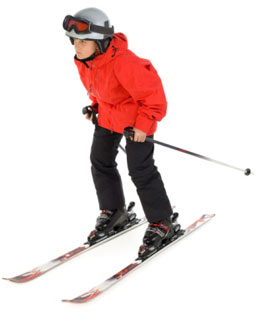
- Go for a check-up at least once a year and don’t hesitate to see a doctor or a rehab specialist if your physical activity produces unusual symptoms.
- If your state of health necessitates regular medical follow-ups and you plan to build more physical activity into your daily routine, we recommend talking to a healthcare professional first.
- Get the proper safety equipment and wear it as directed by the manufacturer.
- Be sure to wear a helmet whenever you go out on a bicycle, inline skates, skateboard or scooter, and whenever you ride a motor-scooter or all-terrain vehicle (ATV). Remember: a helmet is essential in any season. On skis or skates, on a luge or snowmobile… you’ll always look smarter if you’re wearing the right kind of protective helmet!
 In contact sports, be sure to use the proper equipment and the right technique to reduce the risk of injury to yourself or opponents.
In contact sports, be sure to use the proper equipment and the right technique to reduce the risk of injury to yourself or opponents.- If appropriate, wear a mouthguard to reduce the risk of injuries to the mouth and face (even brain damage). Look for a custom-made model or at least a moldable one. Above all, don’t alter your mouthguard by cutting it to make it more comfortable: this will reduce its effectiveness.
- Whether you’re practicing or competing, we recommend that you have a Certified Athletic Therapist (a specialist in the prevention emergency care and rehabilitation of athletic injuries) or a qualified first responder in attendance. Having someone there with specialized training in emergencies can certainly limit the consequences of an injury.
Back to SPORTS AND RECREATION
